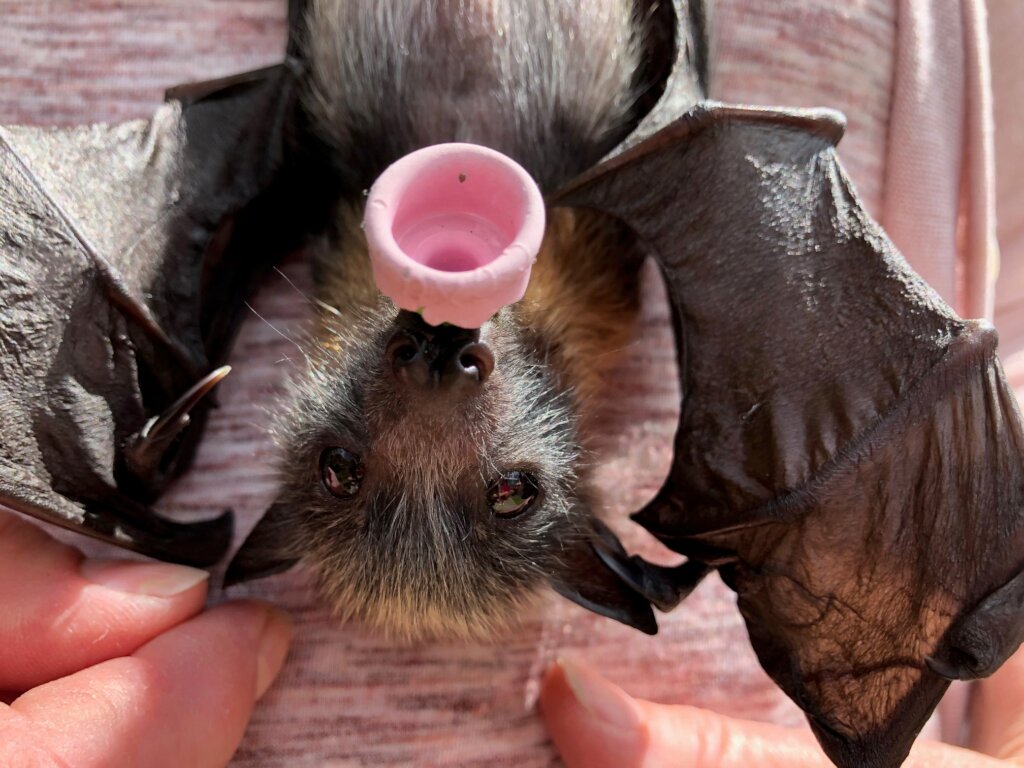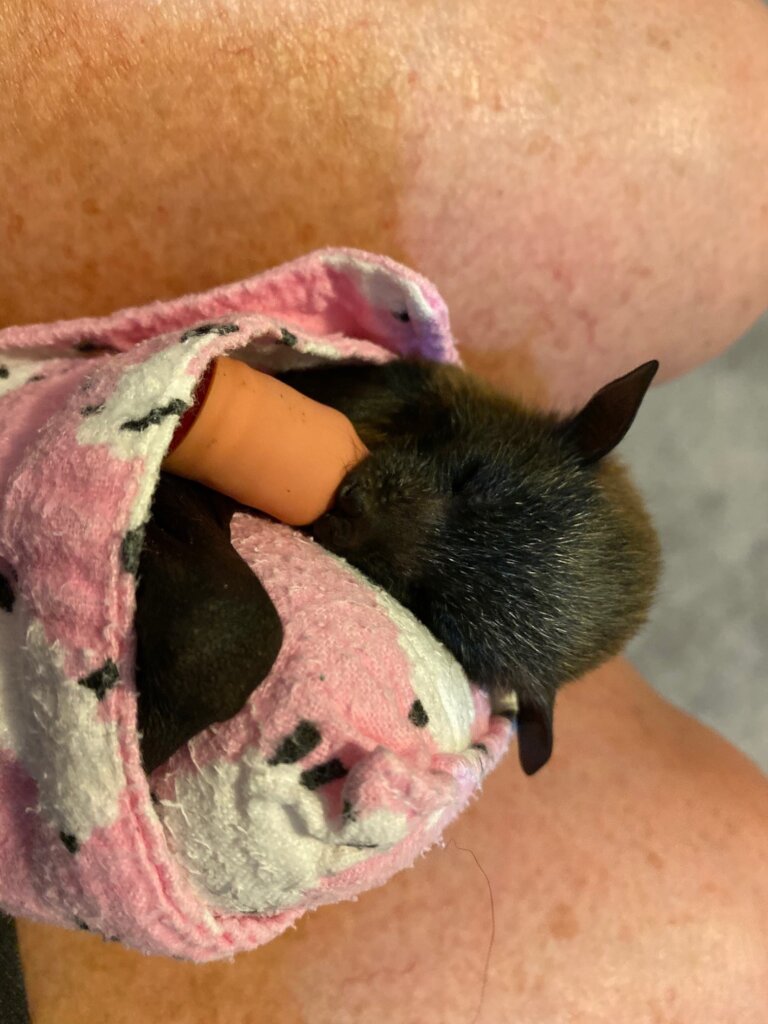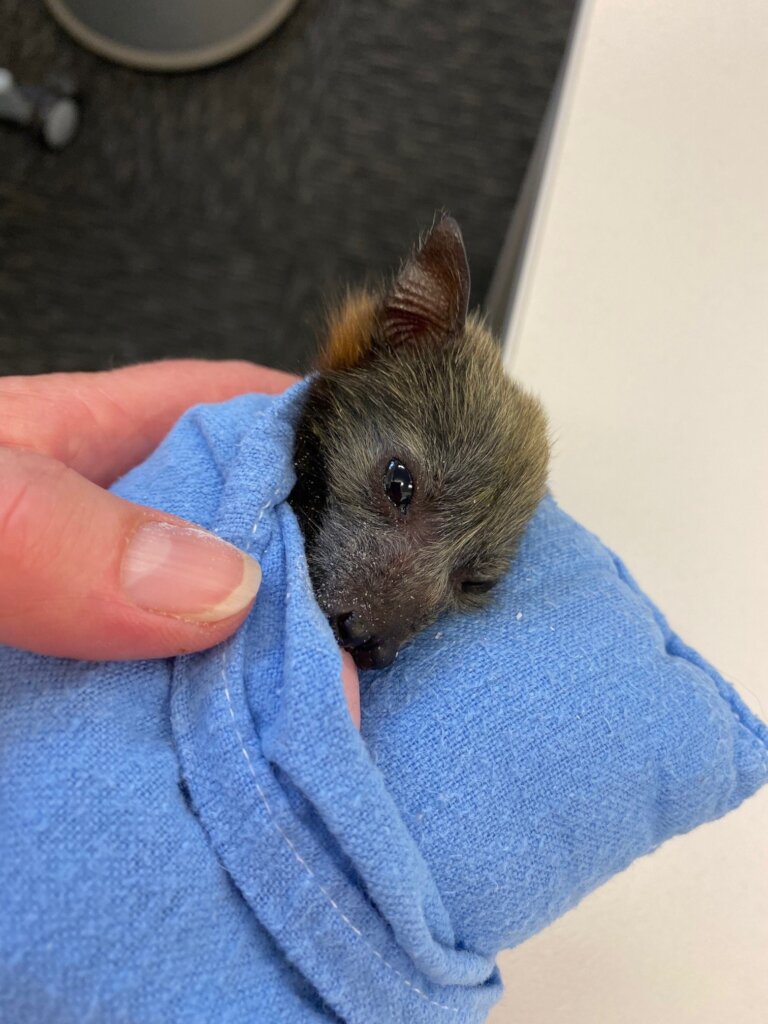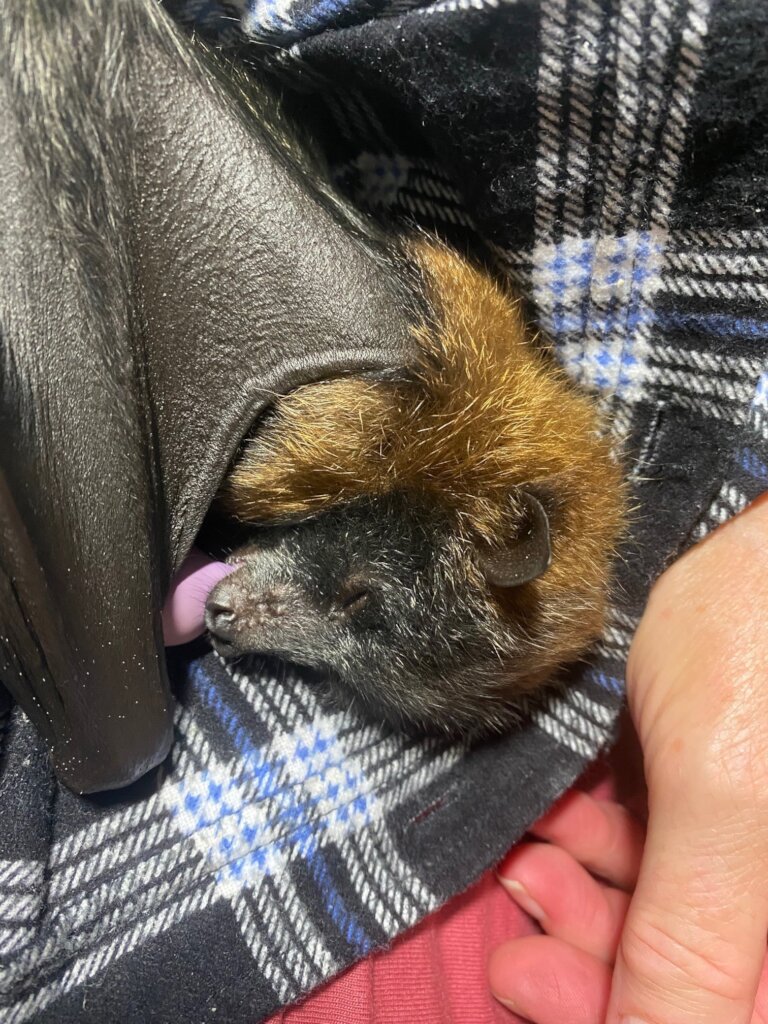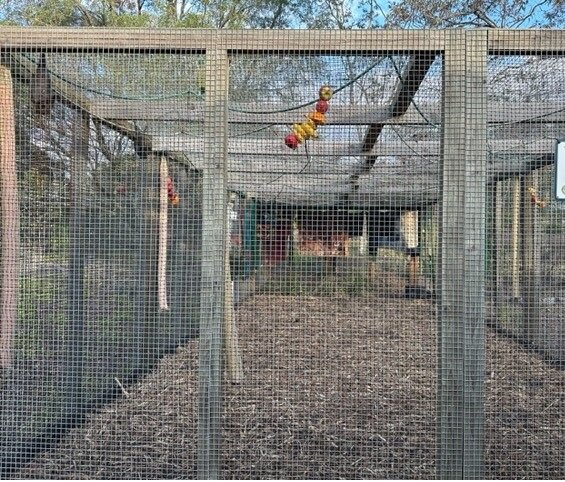By Fiona Bassett | Project Manager
Thank you so much for all your generous donations that enable us to continue to rescue, rehabilitate and release flying-foxes back into the wild. We could not do it without your help.
Weather wise it has been a relatively mild winter in New South Wales, but we are expecting a very hot and dry summer. The possible impact of this weather on our flying fox colonies can be heat stress. Heat stress events in flying-foxes can occur when the temperature exceeds and stays above 38°C, and particularly when temperatures exceed 42°C or when there is a combination of high heat and high humidity. Behaviour of flying foxes with heat stress include panting, wing fanning and clumping or clustering together. If the temperature exceeds 420C their thermoregulatory mechanisms cannot cope, and death is often the result.
This winter we have still had the usual number of adults and sub-adults that have needed to be rescued – caught in fruit netting, collisions with cars or buildings, or poor first flight of this year’s juveniles. As our facility at Kukundi had been closed for the winter break we needed to transport the last of these flying foxes up north giving these adult bats a chance to successfully release in a warmer climate during winter. On Saturday, 6 August, Susan Smith, and Jodi Lewis (2 of our amazing Sydney Wildlife Rescue volunteers and bat carers) set out on their bat road trip with 30 adult Grey Headed Flying Foxes that were loaded into 4 large cages in the back of their SUV.
When transporting flying foxes long distance, the inside of the SUV must be as cold as possible and as quiet as possible. Susan and Jodi were rugged up in jumpers, earmuffs, and gloves to keep themselves warm while providing inside temperature of under 180C (640F). It was a cold and quiet trip up north where the bats were successfully soft released near an established flying fox camp.
A quick review on reproduction in flying-foxes.
As we are about to head into pup season, I thought a quick review on flying fox reproduction might be interesting. Males are sexually mature by 30 months and females by age two. Mating occurs between March and May and starts with the males marking their territory in a tree with secretions from scent glands on their shoulder. The male will actively defend their territory from other males, which means it can be very noisy in the camp site over this period. The females usually become pregnant between March and April which is Autumn in Australia. There is a 6-month gestation period, with mums giving birth in spring, mainly October to November. They give birth in the treetops of the camp to a single pup – twins are sometimes born but often only one will survive. As soon as the pup is born it begins to suckle from its mother. There is a nipple (teat) beneath each wing pit that the pup will latch onto. The pups have milk teeth that curve backwards so that they can keep a firm hold onto the nipple. At night when the mother flies out to search for food the pup clings to her, firmly latched onto the nipple, with its claws in her fur. Newborns are born well furred except for their stomach which is usually tucked up against the mother under her wing. The pup is not able to maintain its own body temperature until it is a older, so stays close to its mother. Pups are born with their eyes open and weigh around 70-80grams (2.4-2.8 ounces). As we are coming into pup season I have added to this report some cute pup pictures.
We feel privileged that you selected our project to support out of so many wonderful causes. By adding your donation, you've become a part of our community of supporters, and we're thrilled to have you on the team.
Please consider telling your friends and family about our project. Sharing with your community about why you chose to support our organization will help us increase the work we can do to support the flying-foxes.
Project reports on GlobalGiving are posted directly to globalgiving.org by Project Leaders as they are completed, generally every 3-4 months. To protect the integrity of these documents, GlobalGiving does not alter them; therefore you may find some language or formatting issues.
If you donate to this project or have donated to this project, you can receive an email when this project posts a report. You can also subscribe for reports without donating.
Support this important cause by creating a personalized fundraising page.
Start a Fundraiser